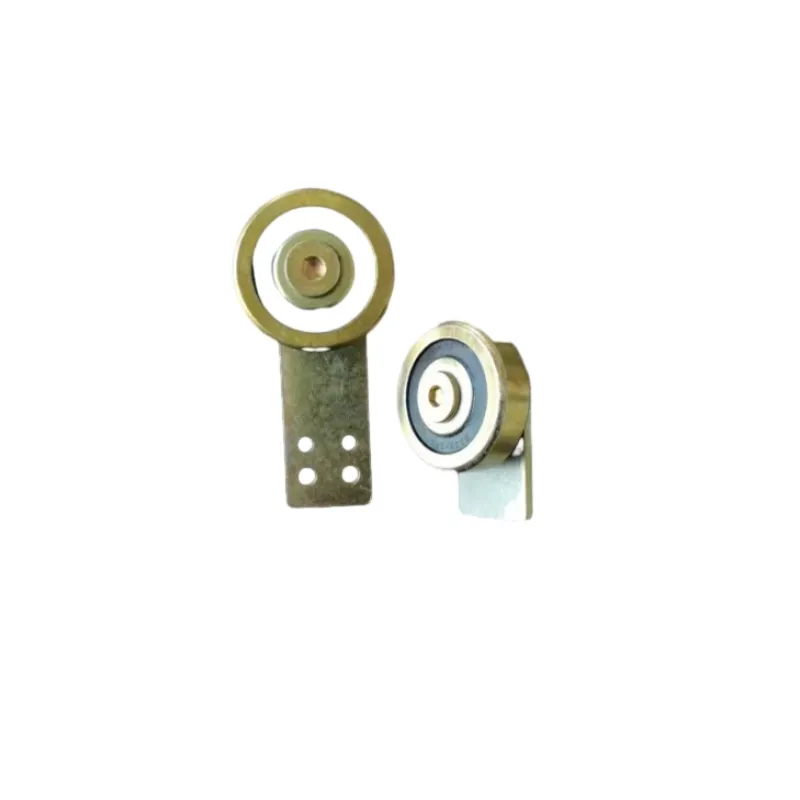
Nov . 22, 2024 04:32 Back to list
roller bearing cone
Understanding Roller Bearing Cones Essential Components for Mechanical Performance
Roller bearings are a pivotal element in various mechanical systems, providing the crucial function of reducing friction and wear between moving parts. Among the different components that comprise a roller bearing, the cone plays a vital role in how these bearings perform. This article explores the significance of roller bearing cones, their design, operating principles, and applications.
What is a Roller Bearing Cone?
At its core, a roller bearing cone consists of an inner raceway and a series of rolling elements, typically cylindrical or tapered rollers. This assembly is paired with an outer race, often referred to as the cup. The cone is designed to accommodate the rollers in such a way that it allows them to roll while minimizing friction. The geometric design of the cone and rollers is crucial for load distribution and overall efficiency.
Design and Geometry
The design of roller bearing cones is inherently linked to their function. Tapered roller bearings, for instance, have cones that taper to a point at an angle. This design helps in managing radial and axial loads simultaneously, making tapered roller bearings ideal for applications where both types of forces are present.
The precise geometry of the cone is essential for maintaining optimal contact with the rolling elements. A well-designed cone ensures that the load is evenly distributed among the rollers, which prevents premature wear and enhances the lifespan of the bearing. Additionally, the cone's dimensions are meticulously calculated to achieve the desired performance characteristics, including load capacity and resistance to misalignment.
Operating Principles
roller bearing cone

The operation of a roller bearing cone is straightforward yet highly efficient. When a load is applied to the bearing, the rollers transmit the load to the cone's inner raceway. As the rolling elements rotate, they create a contact point with the cone that transforms sliding friction into rolling motion. This rolling action significantly reduces the resistance encountered in mechanical systems, allowing for smoother operation and improved energy efficiency.
Furthermore, roller bearing cones are designed to maintain proper lubrication. Lubricants reduce friction further and protect the surfaces from wear, significantly extending the lifespan of the bearings. The choice of lubricant and its application is an important consideration when utilizing roller bearings in various industrial contexts.
Applications
Roller bearing cones are employed in a wide array of applications across numerous industries. In automotive systems, for example, they are found in wheel hubs, transmissions, and differentials, where they facilitate smooth and efficient operation under varying loads. In machinery, roller bearings are utilized in conveyor systems, pumps, and electric motors, ensuring longevity and reliability.
Moreover, the aerospace industry leverages roller bearings in aircraft components, where the ability to support heavy loads while maintaining low friction is critical for performance and safety. Similarly, wind turbines and heavy machinery rely on these components to function optimally despite harsh operating conditions.
Conclusion
In summary, roller bearing cones are indispensable components in mechanical systems, providing critical support for efficient operation. Their unique design and functional principles allow for reduced friction, enhanced load capacity, and extended service life of machinery. As technology advances, innovations in roller bearing cone design will continue to play a significant role in improving the performance and reliability of various applications across multiple industries. Understanding these components is essential for engineers and technicians tasked with maintaining and designing mechanical systems that require precision and durability.
Latest news
-
Spherical Roller Bearings Applications: Heavy Duty, Self-Aligning
NewsAug.30,2025
-
Premium Deep Groove Ball Bearings | High Speed & Reliability
NewsAug.29,2025
-
Durable Scaffolding Clamps - Secure & Reliable Tube Connectors
NewsAug.28,2025
-
Common Failures in Thrust Ball Bearings and Solutions
NewsAug.22,2025
-
How Tapered Roller Bearings Can Take Shock Loads
NewsAug.22,2025
-
Angular Bearings in High-Precision Spindles
NewsAug.22,2025
